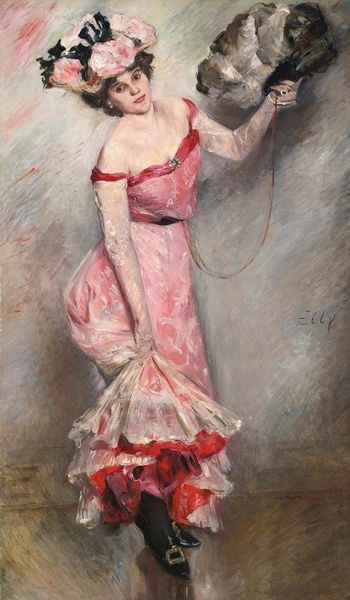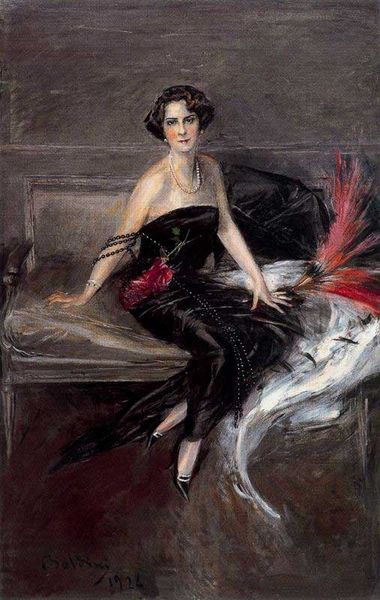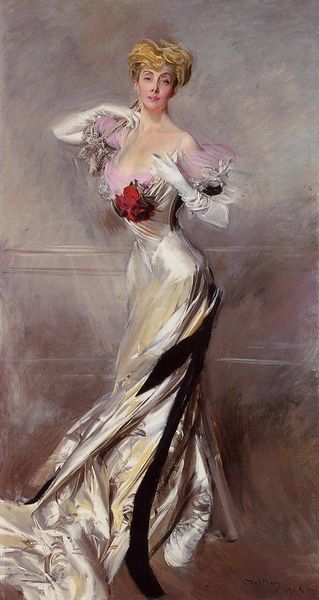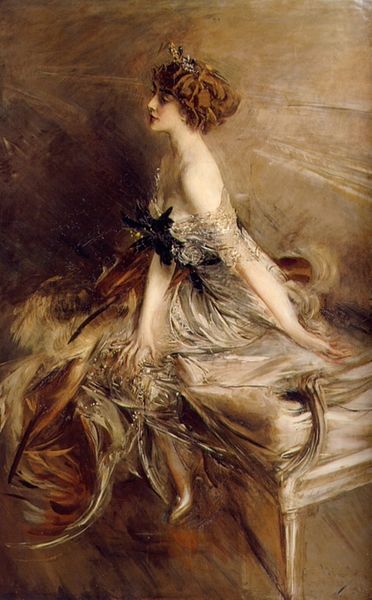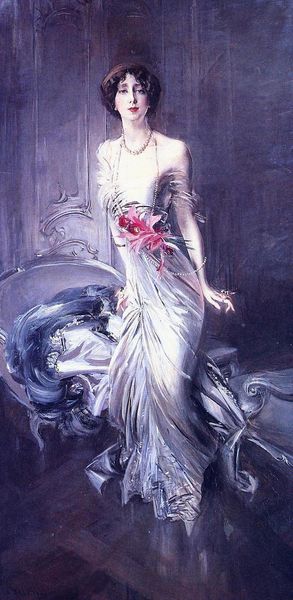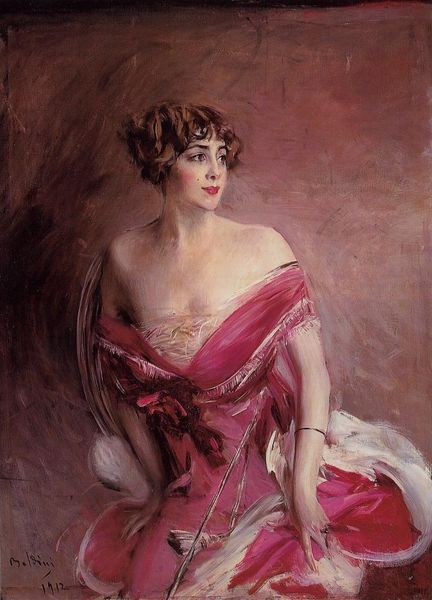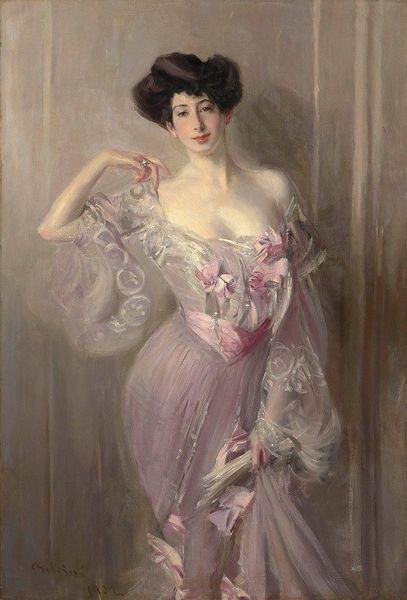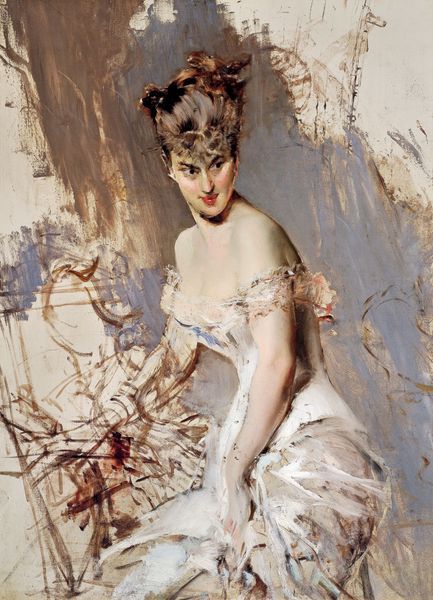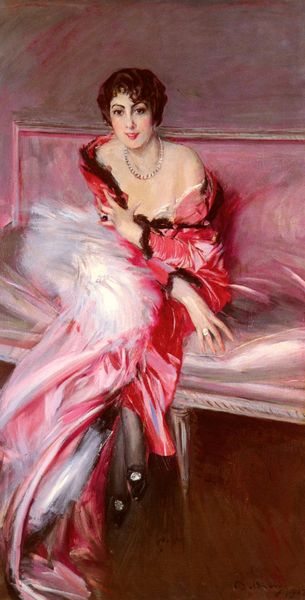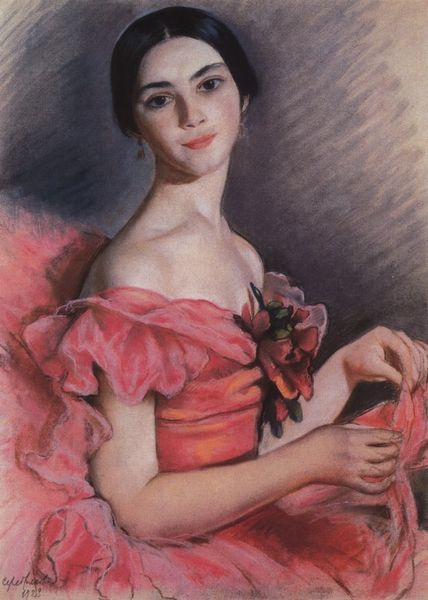
Dimensions: 163 x 113 cm
Copyright: Public domain
Editor: So here we have Giovanni Boldini's "The Lady in Pink," painted in 1916, rendered in oil on canvas. I'm immediately struck by how the fabric seems to swirl and almost liquify, it's pretty impressive to capture that on canvas! What draws your eye? Curator: For me, it's about considering what "oil on canvas" really meant at this moment in history. In 1916, mass production influenced even high art. The ready-made canvases, the industrialized paint pigments - even the very pink itself. Think of the social context of a woman adorned in industrially produced color! How does this accessibility challenge traditional boundaries between high art and the evolving realm of decorative 'craft'? Editor: That's a completely different perspective than what I initially thought of it. So, this isn't just about a beautiful woman in a dress, but about the socio-economic implications of that dress? Curator: Exactly! How does the rise of consumer culture influence not only *what* is depicted, but also *how* it is depicted? Boldini's energetic brushstrokes, almost obscuring form, are a deliberate rejection of academic realism. Yet, this very act of rejection becomes a statement on materiality, focusing on the physical qualities of paint itself, its texture, its capacity for illusion and abstraction. Consider this: who would have worked on this canvas before Boldini? Editor: It makes me think about who prepared the materials. What about the underlayers or basecoat? Curator: Precisely! And that helps us reflect on the labor that underpins even the most seemingly effortless of artworks. Do you find this consideration impacts your understanding? Editor: Definitely. I was focusing on the beauty and elegance but didn’t consider the production behind it, or what materials were now available. It shows how economic shifts impact even the most glamorous portrait. Curator: Precisely. Looking at it from a materialist perspective offers new ways of questioning our perception of art. It enriches how we perceive it.
Comments
No comments
Be the first to comment and join the conversation on the ultimate creative platform.

